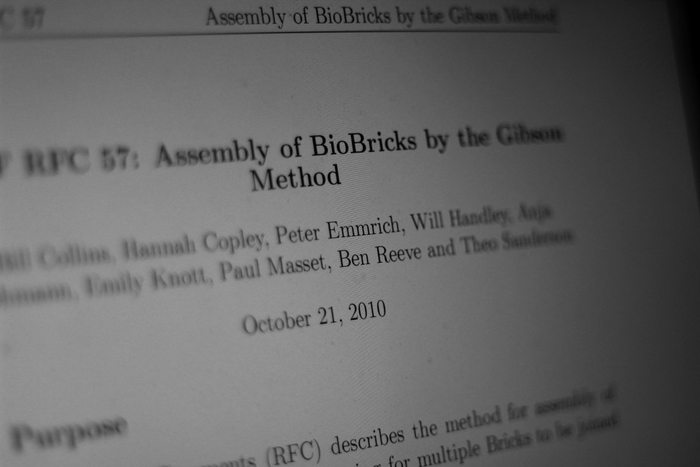Team:Cambridge/Gibson/RFC
From 2010.igem.org
(Difference between revisions)
Peteremmrich (Talk | contribs) |
|||
| Line 4: | Line 4: | ||
The BioBrick foundation uses documents known as [http://bbf.openwetware.org/RFC.html RFC]s to document standard techniques in synthetic biology. Until now no such RFC existed for Gibson Assembly. The Cambridge team created such a document, providing standard protocols for the technique. | The BioBrick foundation uses documents known as [http://bbf.openwetware.org/RFC.html RFC]s to document standard techniques in synthetic biology. Until now no such RFC existed for Gibson Assembly. The Cambridge team created such a document, providing standard protocols for the technique. | ||
| + | |||
| + | Gibson assembly allows joining any sequences using appropriate overlaps. As no restriction enzymes are used, this assembly method technically does not require the assembled parts to be in BioBrick format. It must however be emphasised that it is still necessary to ensure compatibility with existing RFCs in terms of prefixes, suffixes and illegal sites. Gibson assembly can be used to produce fully backwards compatible parts. | ||
{{:Team:Cambridge/Templates/footer}} | {{:Team:Cambridge/Templates/footer}} | ||
Revision as of 03:41, 26 October 2010

Gibson Assembly: RFC
The BioBrick foundation uses documents known as [http://bbf.openwetware.org/RFC.html RFC]s to document standard techniques in synthetic biology. Until now no such RFC existed for Gibson Assembly. The Cambridge team created such a document, providing standard protocols for the technique.
Gibson assembly allows joining any sequences using appropriate overlaps. As no restriction enzymes are used, this assembly method technically does not require the assembled parts to be in BioBrick format. It must however be emphasised that it is still necessary to ensure compatibility with existing RFCs in terms of prefixes, suffixes and illegal sites. Gibson assembly can be used to produce fully backwards compatible parts.
 "
"
